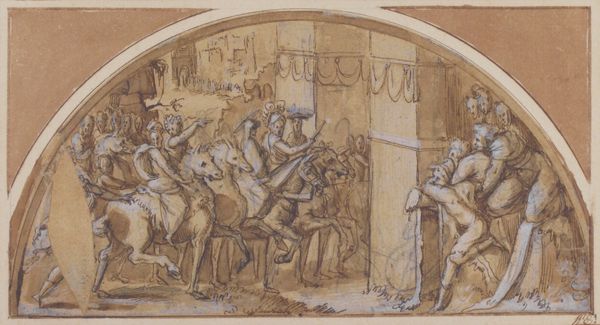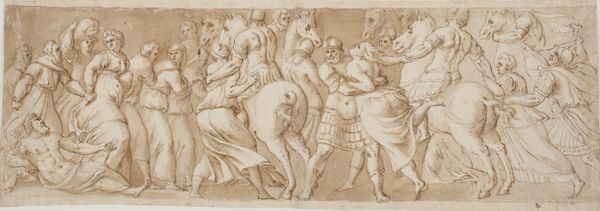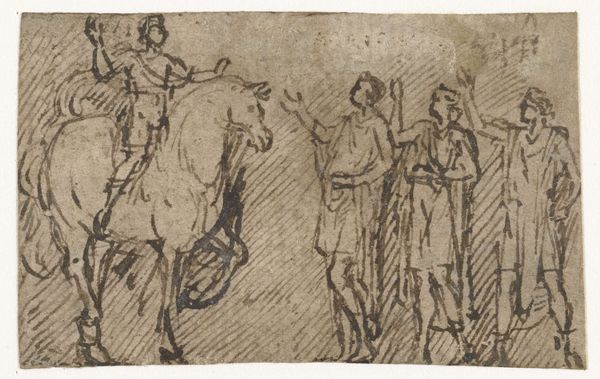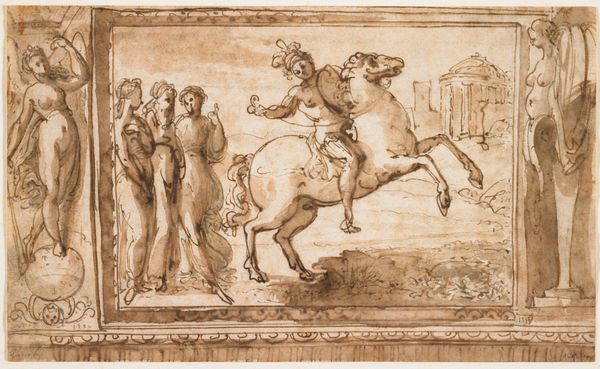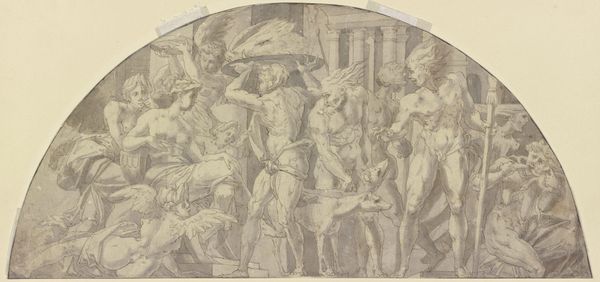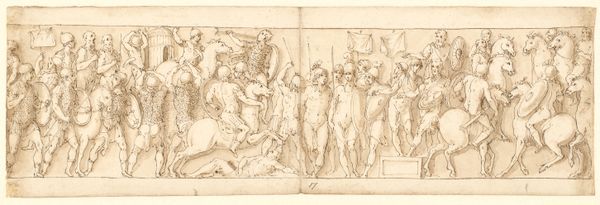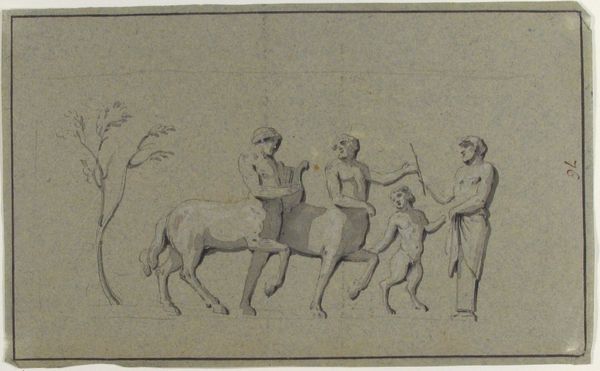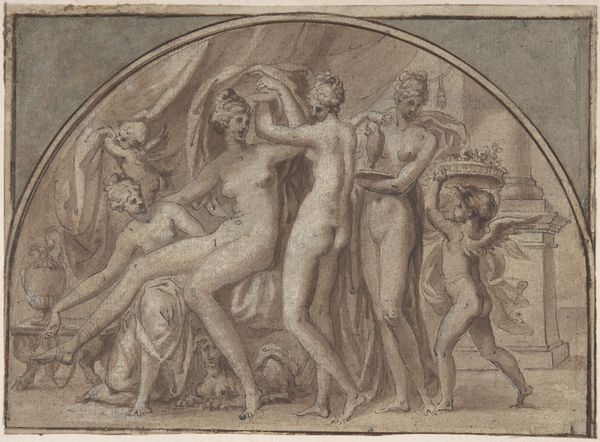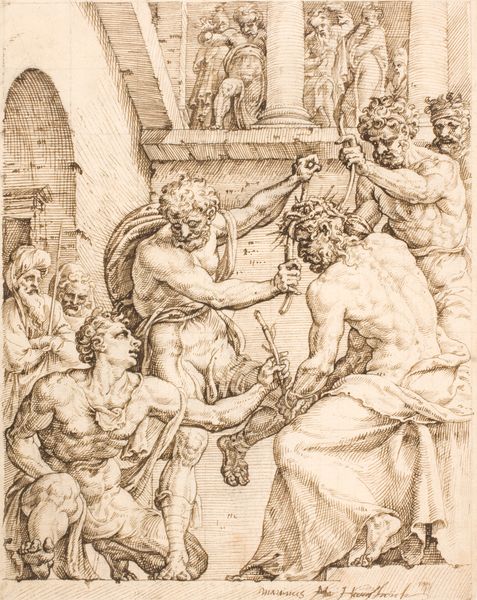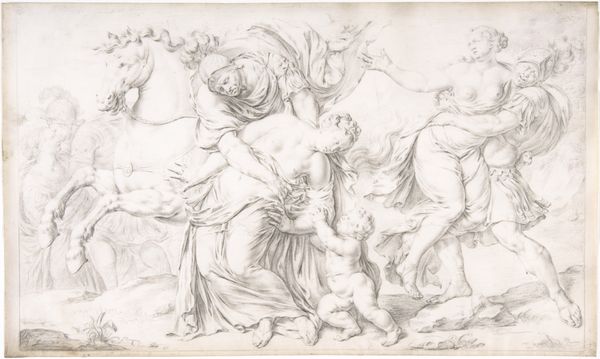
drawing, ink, pen
#
drawing
#
toned paper
#
light pencil work
#
narrative-art
#
pen drawing
#
pen sketch
#
pencil sketch
#
greek-and-roman-art
#
figuration
#
ink
#
ink drawing experimentation
#
ancient-mediterranean
#
pen-ink sketch
#
pen work
#
pen
#
history-painting
#
sketchbook art
#
pencil art
Dimensions: 126 mm (height) x 319 mm (width) (bladmaal)
Editor: Here we have an interesting pen and ink drawing from somewhere between 1596 and 1669, called "Frieze from a Roman sarcophagus(?)". It’s anonymous, and is currently located at the SMK - Statens Museum for Kunst. It gives the impression of intense drama; you've got what looks like a battle, some figures that are being dressed and another that is already wounded. How do you interpret a scene like this? Curator: The drawing offers a fascinating glimpse into how artists studied and reinterpreted classical antiquity. We see figures derived from Roman art, re-contextualized for a later European audience. Notice how the artist has created an aesthetic and social statement by adopting this ancient language of power. It would be interesting to find the original sculpture, and understand how and why the artist has appropriated certain images, changed them, or used them in new ways. Why do you think the artist would choose this particular scene? Editor: Perhaps because of its potential for grand narrative? A scene from a triumph, maybe, or a moment from a well-known myth rendered in this archaic style gives it additional weight, or perhaps it was to show that art can still impact contemporary life? Curator: Exactly! Reproducing it could signal an aspiration to classical virtues and ideals in a world undergoing massive political and social transformation. Now look at how the drawing is produced, with lines carefully modeled, that suggest a sculpture, can you describe how this would shape how viewers from the 17th Century understood ancient history and the artist’s vision of power and history? Editor: Well, I can see how it blends the past with their contemporary life… So, I imagine they felt that they were closer to these historical figures? Curator: Precisely! The image becomes a powerful symbol within evolving socio-political environments. Consider this piece not just as a drawing of an ancient object, but a commentary on history and artistic authority itself. Editor: This drawing now makes more sense within the broader historical and artistic context. I hadn't thought about it that way. Curator: Seeing the artistic choices that shape history gives the drawing a modern relevance.
Comments
No comments
Be the first to comment and join the conversation on the ultimate creative platform.
